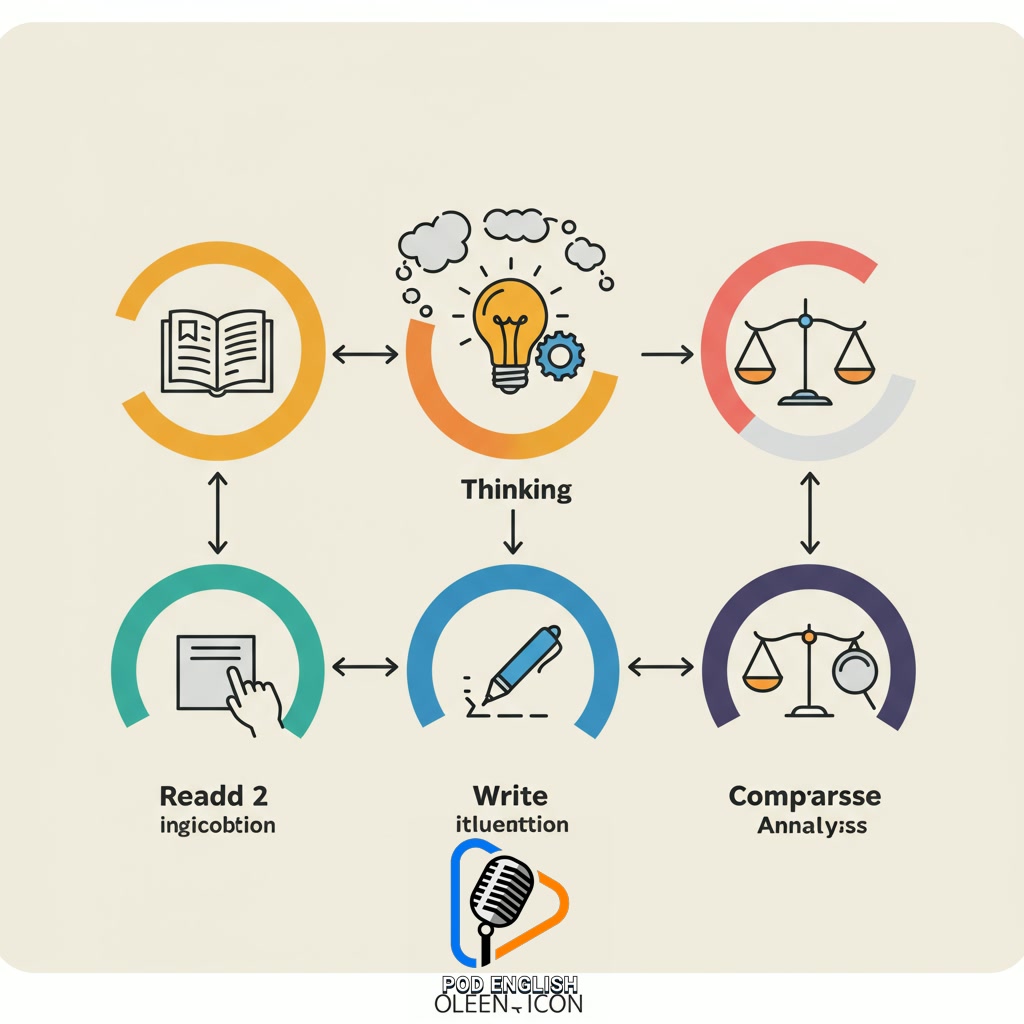Learn English
Boost Your English Skills: Learn Vocabulary and Grammar by Rewriting News Headlines

This approach offers a practical method for significantly enhancing English language proficiency. By actively engaging with and rewriting news headlines, individuals can effectively acquire new vocabulary in context. This process also serves as a dynamic way to reinforce and apply essential grammar structures. It provides an active technique focused on boosting overall communication skills and language command.
Table of Contents
- Section 1: Introduction: Why News Headlines for English Practice?
- Section 2: The Step-by-Step Guide to Rewriting Headlines
- Section 3: Boosting Vocabulary: Finding and Using New Words
- Section 4: Improving Grammar: Analyzing and Restructuring Sentences
- Section 5: Putting it into Practice: Tips and Resources
- Section 6: Tracking Your Progress and Staying Motivated
- Section 7: Conclusion: Make Headline Rewriting Your Learning Tool
Section 1: Introduction: Why News Headlines for English Practice?
Improving your English skills effectively involves interacting with authentic language used in everyday contexts. News headlines offer a uniquely valuable resource for this purpose. They are concise, designed to grab attention, and frequently utilize up-to-date vocabulary and common grammatical structures relevant to current events. Their brevity makes them less daunting than full articles, providing manageable chunks of language to process. By focusing on headlines, learners can quickly grasp how words and phrases are used in a real-world setting, making the learning process practical and engaging. This focused approach allows for targeted vocabulary acquisition and grammar reinforcement, laying a solid foundation for more advanced language study.

Introduction: Why News Headlines for English Practice?
Section 2: The Step-by-Step Guide to Rewriting Headlines
Now that you understand the value of news headlines for learning, let’s explore the practical steps for rewriting them effectively. Begin by carefully reading the original headline to grasp its core meaning and identify any unfamiliar vocabulary or grammatical structures used. Next, actively think about alternative ways to express the same information. This might involve using synonyms for key words, changing the sentence structure (e.g., active to passive or vice versa), or rephrasing concepts. Try writing your version of the headline, intentionally incorporating new vocabulary you want to learn or practicing specific grammar points you are focusing on. Finally, compare your rewritten headline with the original to see how your version differs and to identify areas for further learning or refinement. This active process is key to reinforcing understanding and solidifying new language skills.

The Step-by-Step Guide to Rewriting Headlines
Section 3: Boosting Vocabulary: Finding and Using New Words
Following the initial reading and understanding of the headline’s core message, the next crucial step in this learning method is actively identifying and incorporating new vocabulary. As you analyze the original headline and its associated article content (even if just briefly scanning for context), pay close attention to words that are unfamiliar or used in a new way. Don’t just guess; make an effort to look up these words using a dictionary to understand their precise meaning and how they function grammatically. Once you grasp the new word, the rewriting process becomes your practice ground. Try to rephrase the headline using the newly learned term, experimenting with different sentence structures. This active application is vital for moving the word from passive recognition to active use, solidifying your understanding and expanding your usable vocabulary effectively within relevant contexts.

Boosting Vocabulary: Finding and Using New Words
Section 4: Improving Grammar: Analyzing and Restructuring Sentences
Building upon your understanding of new vocabulary, the next vital step involves a focused analysis of the headline’s grammatical structure. This means looking closely at how the words are arranged, identifying the main subject and verb, and noticing the use of tenses, articles, prepositions, and other grammatical elements. By dissecting the original sentence, you gain insight into correct English syntax. The real benefit comes in the restructuring phase: actively rewriting the headline using your new vocabulary and the grammatical patterns you’ve observed. This hands-on practice forces you to apply grammar rules in a practical context, reinforcing your understanding and improving your ability to construct accurate and varied sentences. It’s an active way to move beyond just knowing rules to actually using them effectively.

Improving Grammar: Analyzing and Restructuring Sentences
Section 5: Putting it into Practice: Tips and Resources
Following the grammar analysis step, it’s time to implement the rewriting strategy. To put this method into practice effectively, start by choosing news sources that align with your interests to make the process engaging. Use a notebook or a digital document to write down the original headline and your rewritten versions. Focus on one or two aspects at a time – perhaps initially concentrating on incorporating new vocabulary you’ve learned, and later shifting focus to applying specific grammar rules you are studying. Don’t be afraid to experiment with different sentence structures and word choices. Utilize online dictionaries and grammar resources to check your work and understand alternative phrasing. Consistency is key; try to dedicate a short amount of time each day to this practice. Comparing your rewrites to how professional journalists might phrase similar ideas can also provide valuable insights into natural English usage.

Putting it into Practice: Tips and Resources
Section 6: Tracking Your Progress and Staying Motivated
Building on the rewriting strategy, maintaining momentum is key to seeing real improvement. To effectively track your progress with this method, consider keeping a dedicated notebook or digital file where you save your original headlines alongside your rewritten versions. Date each entry consistently. This allows you to visually see your progress over time, noticing how your vocabulary expands and your grammar becomes more accurate and varied. Regularly reviewing your older entries compared to newer ones can be a powerful motivator, highlighting how far you’ve come. Setting small, achievable goals, such as rewriting a specific number of headlines per day or actively using a certain number of new words from your rewriting, can also help maintain consistency and boost confidence. Celebrate these small victories to keep your enthusiasm high as you continue to build your English skills effectively.
Tracking Your Progress and Staying Motivated
Section 7: Conclusion: Make Headline Rewriting Your Learning Tool
Building on the strategy of consistent rewriting and tracking your progress, it becomes clear that making headline rewriting a regular part of your routine is the key to unlocking its full potential. This simple yet effective technique transforms passive reading into active learning. By consistently engaging with real-world news headlines, you solidify new vocabulary in meaningful contexts and naturally reinforce essential grammar structures. It’s a dynamic, hands-on approach that fits easily into a busy schedule. Embrace this method not just as an exercise, but as your go-to learning tool for continuous improvement. Make it a habit, and watch your English skills flourish.

Conclusion: Make Headline Rewriting Your Learning Tool













